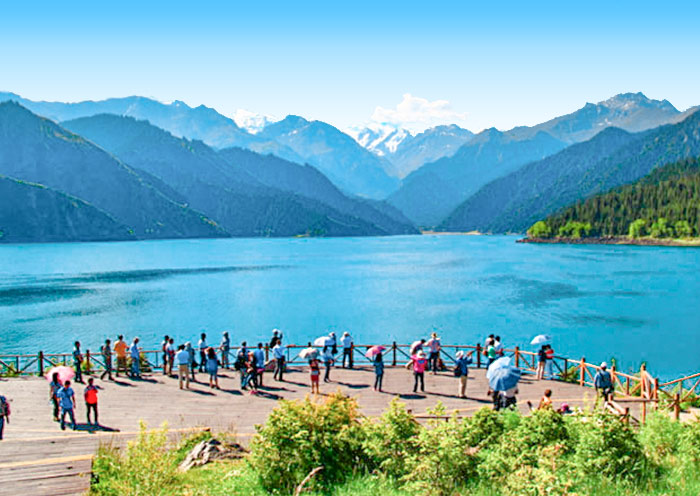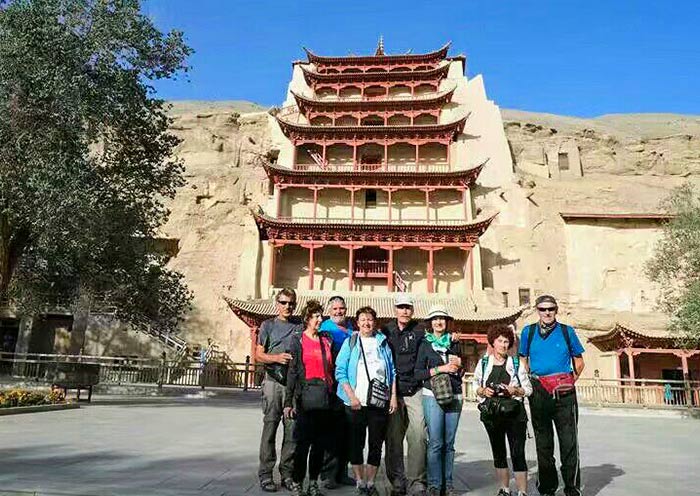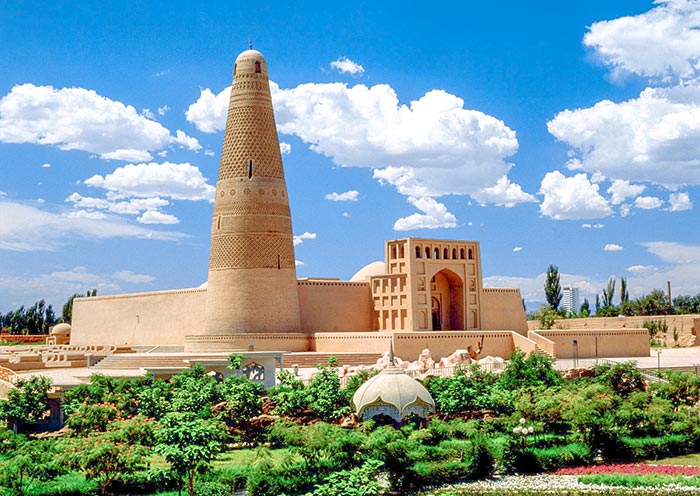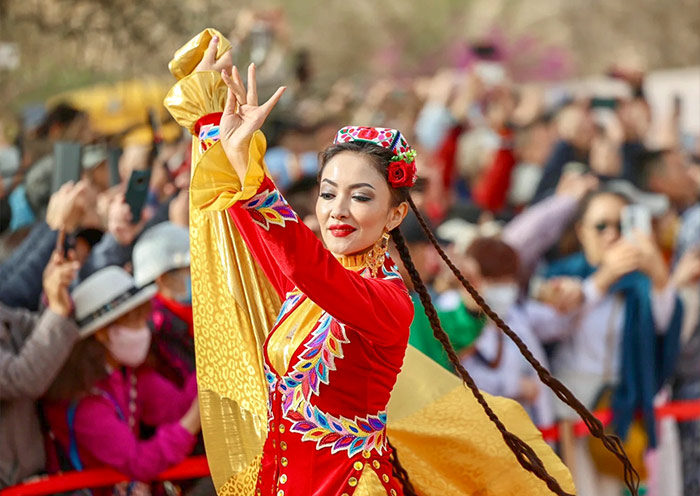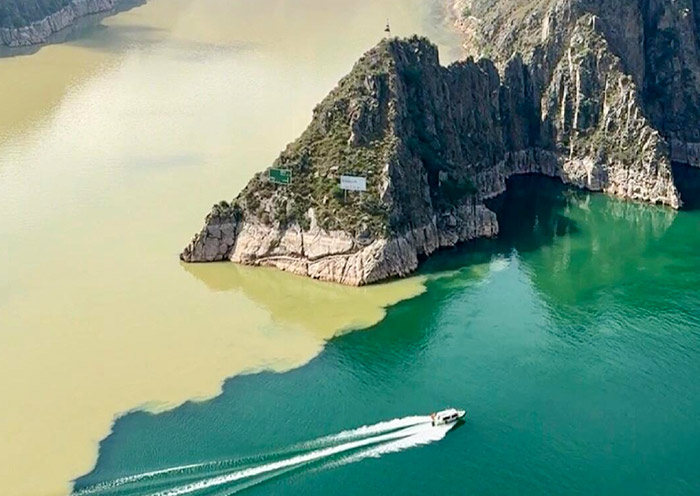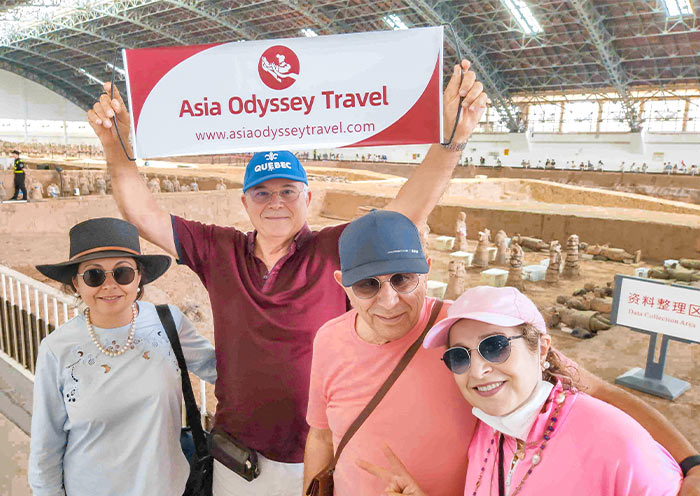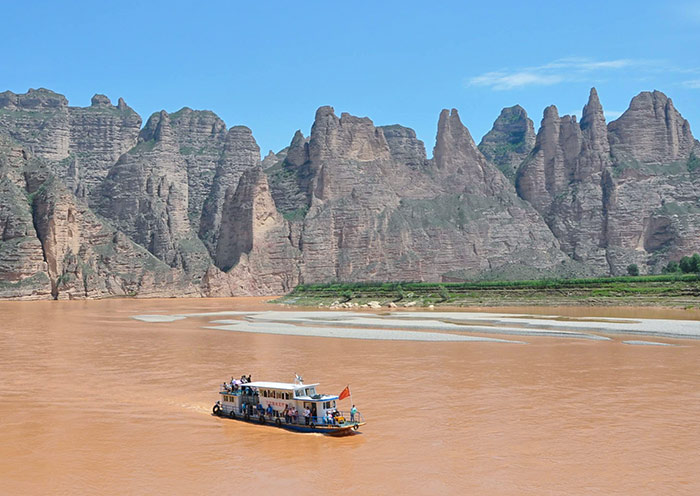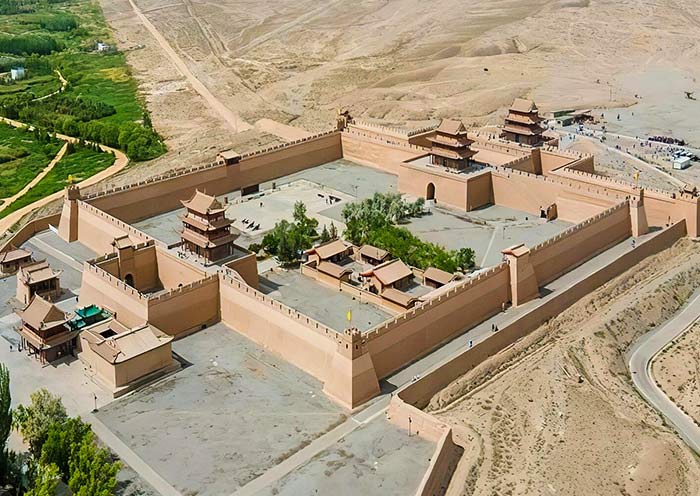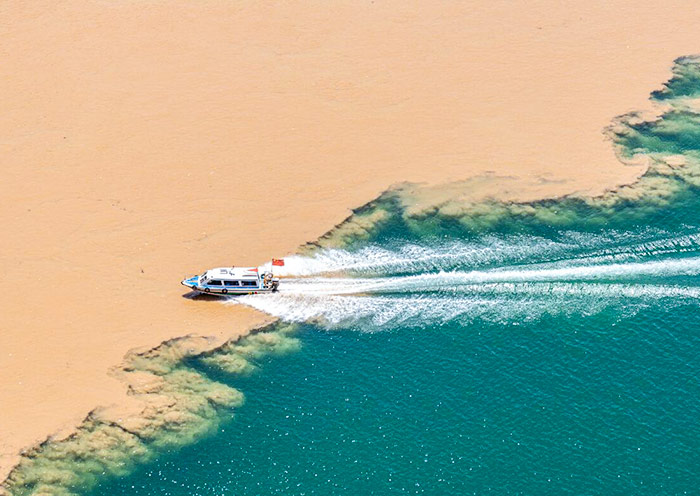Our 8 days group tour in December was amazing! Tokyo’s vibrant streets and Mount Fuji’s snow-capped beauty were breathtaking. Kyoto’s temples and Nara’s deer park offered a serene charm, while Osaka dazzled with its food and nightlife. Hiroshima’s Peace Memorial Park was deeply moving. The crisp winter atmosphere and festive illuminations added a magical touch. Traveling with a small group made the experience fun, seamless, and unforgettable!
8 Days China Silk Road Tour from Dunhuang to Turpan, Urumqi & Kashgar
- Highlights
- Itinerary
- Price
- Trip Notes
- Accommodation
- Photos
- Reviews
Journey to the West Tour: Follow the Route of Xuanzang (Wu Kong's Master)
Why China Silk Road Tour from Dunhuang? You may read about Monk Xuanzang's Journey to the West, who traveled to India in the 7th century AD to collect Buddhist scriptures. Take our 8 Days China Silk Road Tour from Dunhuang to Turpan, Urumqi & Kashgar. Immerse yourself in a cultural exploration along the path once traversed by Xuanzang (the Master of Wukong/the Monkey King in the novel Journey to the West) for an authentic Silk Road experience.
Dunhuang is a must-visit destination on a Silk Road Tour due to the Mogao Caves (World Heritage) & the birthplace of Tunhuangology (敦煌学). It is amazing to ascend the enchanting Singing Sand Dunes to witness a desert sunset & sunrise by the Crescent Lake. Turpan is famous for the Karez System (a World Irrigation Project Heritage) which helps to transform deserts into oasis. Besides, you can explore Silk Road relics by wandering through the Jiaohe Ancient City Ruins (World Heritage), a "super" city on the ancient Silk Road. Urumqi, the "Urban Heart of Asia", is a crucial hub along the ancient Silk Road, connecting China with Central Asia. Visit Heavenly Lake of Tianchi (World Heritage) in northeast Urumqi. Gaze at Tianchi's celestial mirror amid snow-capped peaks, where sky and earth blend in breathtaking blue and jade.
Take our 8 Days China Silk Road Tour to follow the Route of Xuanzang (Wu Kong's Master) by visiting Dunhuang, Turpan, Urumqi, and Kashgar. Find your Journey to the West Tour with us now.
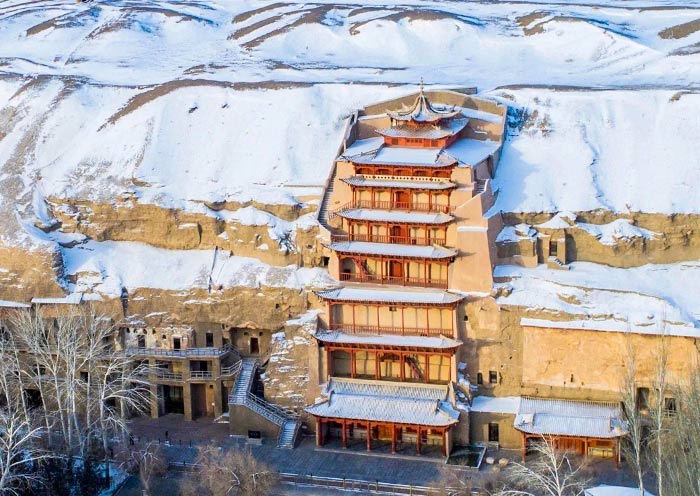
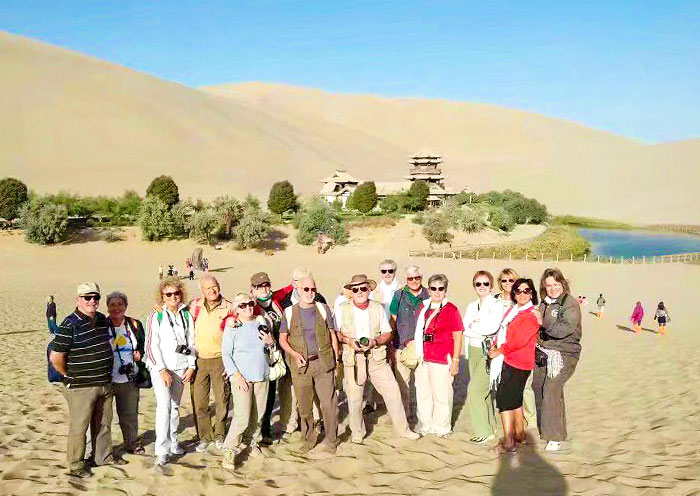
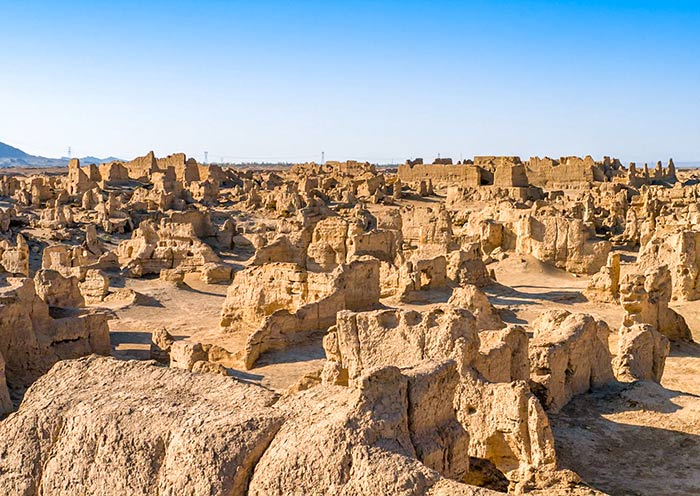
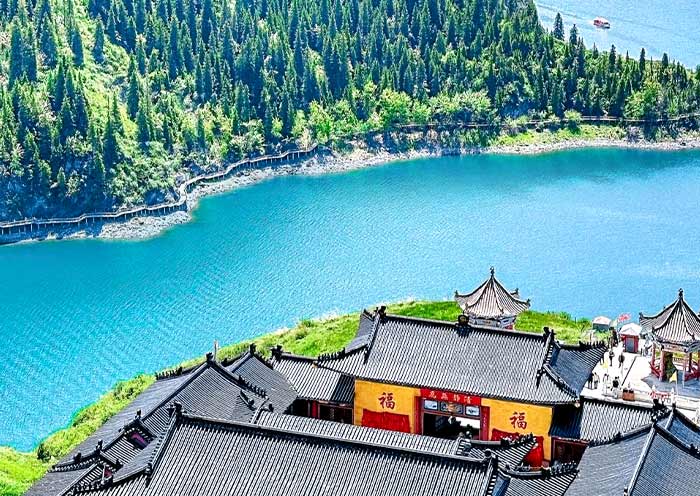
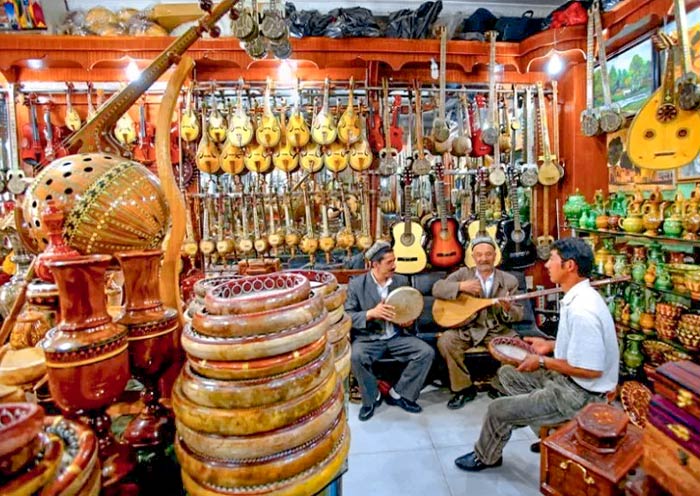
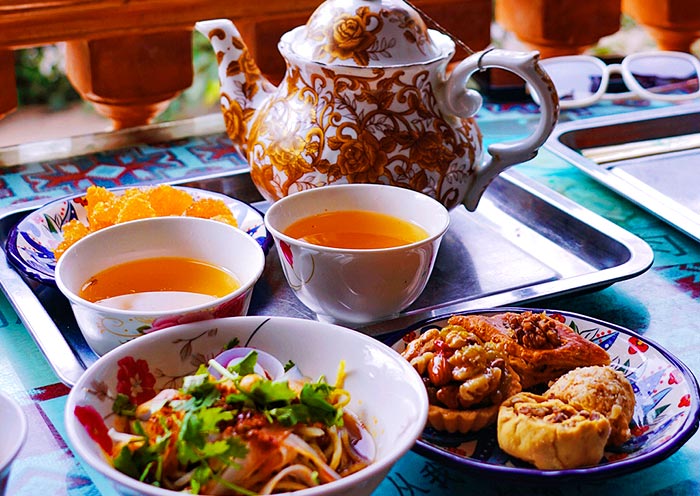
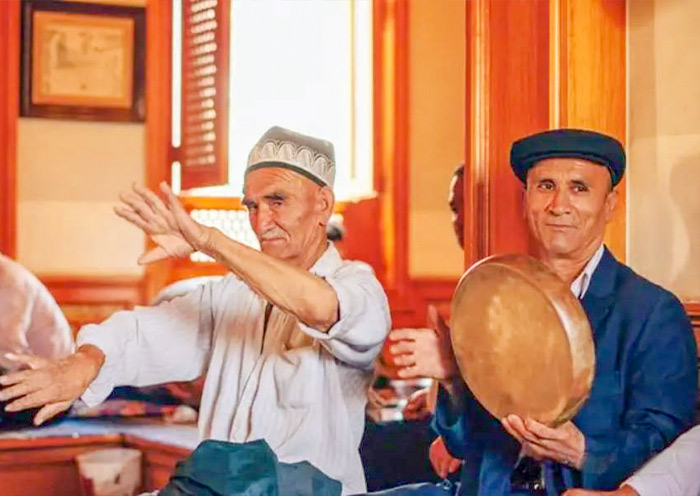
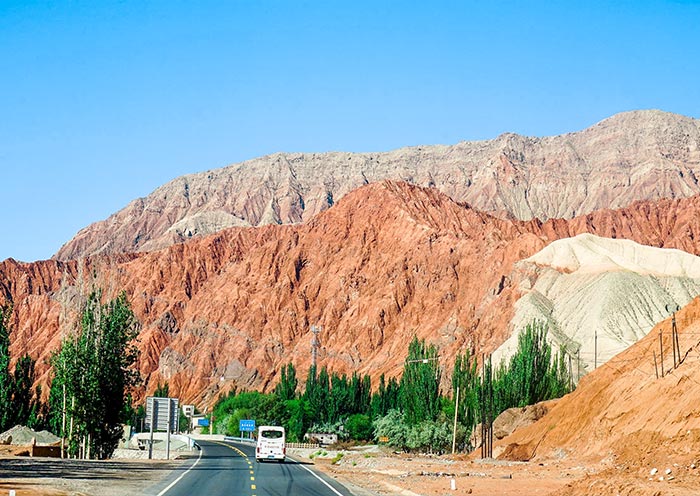
Itinerary at a Glance
Dunhuang (2.5 Days)
Mogao Grottoes (World Heritage), Singing Sand Dunes & Crescent Spring, Dunhuang Museum, Dunhuang Shazhou Night Market (Optional)
Turpan (1 Day)
Jiaohe Ancient City Ruins (World Heritage), Karez Irrigation System (World Irrigation Project Heritage), Emin Minaret
Urumqi (2 Days)
Heavenly Lake of Tianshan (World Heritage), Xinjiang Regional Museum
Kashgar (2.5 Days)
Kashgar Old City (Id Kah Mosque, Ancient Tea House), Livestock Market (Sunday Only), China-Pakistan Highway (Karakoram Highway)
Itinerary Day by Day
Welcome to Dunhuang, a must-visit city located in the Gansu province of China! Upon arrival in Dunhang, your guide will meet you at the airport and escort you to your hotel. You can explore on your own based on your arrival time. Feel free to seek travel ideas from your tour guide.
Dunhuang, a city in Jiuquan (酒泉市), which was formerly known as Suzhou (肃州), is the birthplace of the "su" character in Gansu Province (甘肃的“肃”). Dunhuang is a desert oasis of ancient wonders. Discover the hidden gems of China's western frontier. Explore the breathtaking Mogao Caves, a UNESCO World Heritage Site adorned with vibrant murals and intricate sculptures. Trek through the Gobi Desert, marveling at the Crescent Lake's turquoise waters and towering sand dunes. From stargazing under pristine skies to experiencing the thrill of sandboarding, and camel riding, Dunhuang offers a captivating journey through time and nature. Dunhuang is also famous for Tunhuangology (敦煌学), a specialized field of study dedicated to exploring and interpreting the vast cultural and historical treasures in the Mogao Caves.
Free Time Ideas:
Dunhuang Shazhou Night Market (敦煌沙洲夜市) for Dunhuang food. There are many distinctive snacks that you must try, such as Apricot Skin Water (杏皮水), Donkey Meat Noodles (驴肉黄面), and Bubble Oil Cakes (泡儿油糕). The locals in Dunhuang enjoy eating lamb, chicken, and beef, and they are good at noodle making.
Arrival Ideas:
1. How to get to Dunhuang By Air: Dunhuang Mogao International Airport (敦煌莫高国际机场; or Dunhuang Airport) is located about 13 km from city center and 22 km from the Mogao Caves. Direct flights connect Dunhuang with major cities in China, such as Beijing (3h 45min), Shanghai (4h 25min), Chengdu (2h 40min), Xian (2h 40min), Lanzhou (1h 35min)... It's essential to check flight schedules in advance, as not all routes operate year-round.
2. How to get to Dunhuang By High-speed Train: Dunhuang can be reached by train through Dunhuang Railway Station and Liuyuan Railway Station. Dunhuang Railway Station is situated 10 km from the city center and offers bullet trains from Lanzhou (8-9 hrs) and Jiayuguan (3 hrs). Liuyuan Railway Station, around 130 km from downtown Dunhuang, provides high-speed trains to Urumqi (4.5 hrs), Jiayuguan (2 hrs), Zhangye (3-4 hrs), Turpan (3.5 hrs), among others. Normal trains from major cities like Beijing, Shanghai, and Chengdu also make stops at Liuyuan station.
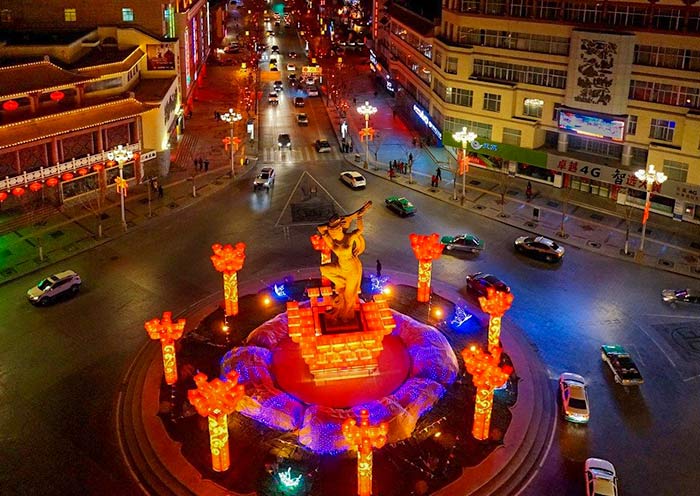
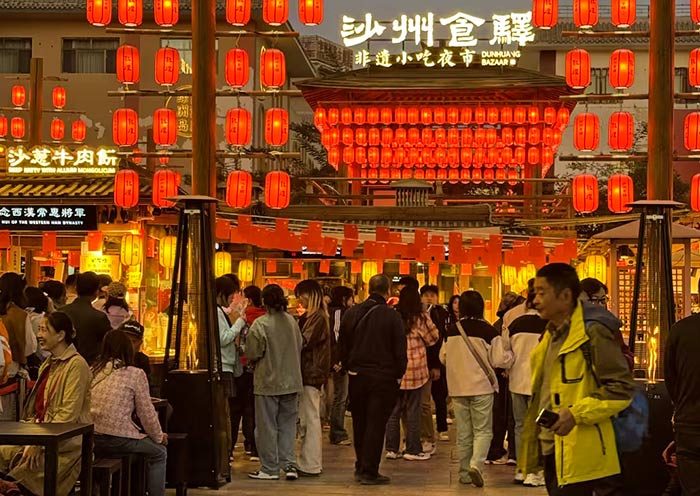
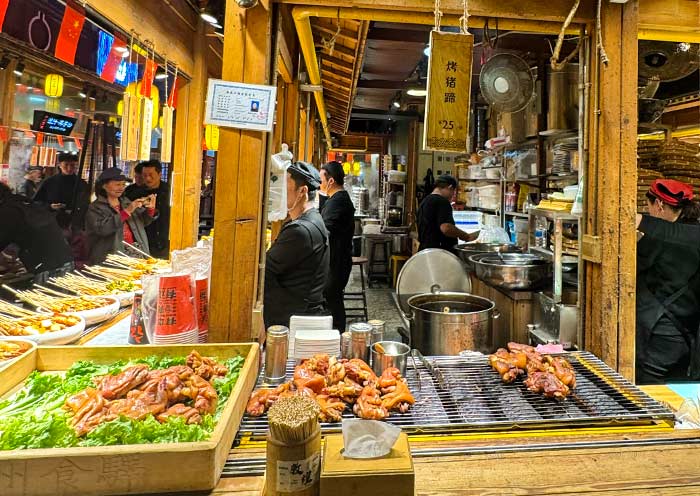
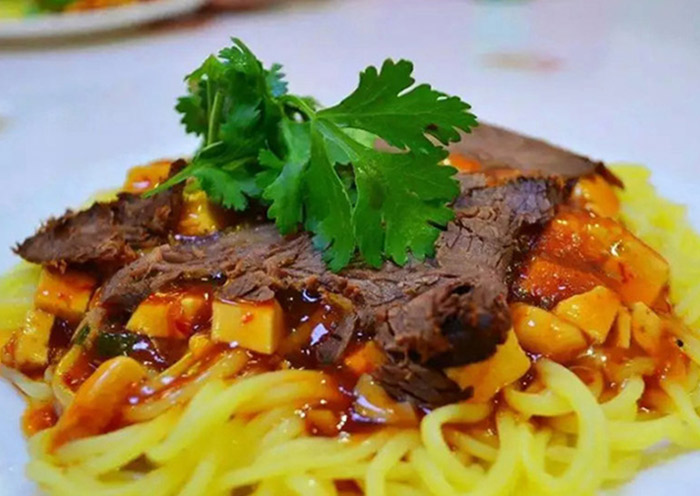
Today, you will enjoy a wonderful Dunhuang Culture Tour by visiting Mogao Grottoes (4-4.5hrs), a UNESCO World Heritage site. You can enjoy the relaxing time in Mingsha Mountain & Crescent Lake, don’t miss the delicious food at the local market.
Dunhuang Mogao Grottoes is the must-visit place for a trip to Gansu. You may have read many stories about A. Stein (斯坦因a British archaeologist and explorer) and the vast trove of artifacts (Paintings, Sculptures, Manuscripts) he brought from the Mogao Grottoes in the early 20th century. You may have already seen the artifacts Stein collected in the British Museum in London. Or you may have heard of Paul Pelliot (French archaeologist & Sinologist) who like A. Stein, conducted several expeditions to Dunhuang and collected a large number of artifacts which is primarily housed in the Guimet Museum in Paris, France. Welcome to visit Mogao Grottoes the source of the world famous Dunhuang Manuscripts (Dunhuang Yi shu敦煌遗书; Cave 16-17) and explore valuable insights into the history and culture of the Silk Road.
The Mogao Caves (Mogao Grottoes莫高窟), also known as the Thousand Buddha Grottoes (千佛洞), are acclaimed as the "Treasure House of Eastern Art东方艺术宝库." The remaining 735 caves are dotted along cliffs rising about 15-30 m high and over 1,700 m, forming a magnificent spectacle of this world cultural heritage site. Despite the significant loss of artifacts to oversea museums, the Mogao Caves remain one of the world's largest and most richly endowed repositories of Buddhist art. Spanning sixteen kingdoms, Northern Wei, Western Wei, Northern Zhou, Sui, Tang, Five Dynasties, Song, and Western Xia dynasties, the construction of the Mogao Grottoes lasted for over a thousand years until the Yuan Dynasty, resulting in about 45,000 ㎡ murals and 2,415 clay sculptures. In the year 366 AD, the first cave of the Mogao Caves was carved into the cliff by the Monk Le Zun (乐僔; over 1,650 years ago). In the 7th century, Xuanzang (唐僧) translated numerous Buddhist scriptures at the Mogao Caves. In 1900, Daoist Wang (王圆箓) discovered the Library Cave (藏经洞; Sutra Cave; Cave 16). From 1941 to 1943, Zhang Daqian (张大千), a prodigious Chinese artist of the twentieth century, copied 276 murals here.
At the Mogao Caves, you can explore various types of grottoes (large statue caves, Nirvana caves, central pillar caves, vaulted ceiling caves, hall caves) and learn about the pigments used by ancient artists in painting murals (cinnabar, orpiment, azurite, mica, gamboge, gold leaf, shell powder). You can admire narrative paintings of Buddhist themes (the life of Shakyamuni Buddha, the Nine-Colored Deer Sacrificing Itself to Save Others), diverse clay sculptures (Buddha statues, Bodhisattva figures, guardians, deities), Flying Apsaras (飞天) and Swirling Dances (Sema; 胡旋舞) in the prosperous Tang Dynasty, as well as the attire and customs of patrons from various dynasties. At the Mogao Caves, you can witness the brilliance and charm of the ancient Silk Road and the efforts and achievements of generations of cultural heritage preservation workers and researchers (such as Chang Shuhong常书鸿, a Chinese painter known as the "guardian of Dunhuang"敦煌守护神).
You can start at the Mogao Caves Digital Center (莫高窟数字中心), watch a 40-minute digital film, and then take a shuttle bus to the caves. Guided by the site interpreters, you will visit 8 caves sequentially (Ticket A; no photography allowed inside the caves). You may have the chance to see significant caves like the Library Cave (Caves 16-17; the largest cave), the Nine-Storey Tower (Cave 96; one of Mogao's iconic structures; the largest Buddha statue), the Nirvana Sutra Cave (Cave 148; reclining Buddha), the Early Tang Treasures Cave (Cave 332), and the Northern Wei Masterpieces Cave (Cave 257). The actual eight caves visited may vary based on the site's conditions. If interested, you can visit the Cultural Relics Protection and Display Center (文物保护陈列中心) to see 1:1 replicas of eight special caves, including Caves 275, 249, 285, 419, 220, 217, 25, and 3 (photography allowed). After the tour, you can return to your hotel to rest, and if time permits, you can visit the Dunhuang City Museum (optional) after lunch.
Optional Visiting Place:
Coffee Time in Dunhuang Book Center (敦煌书局Reservation required): A popular spot in Dunhuang, a modern lifestyle aesthetic space that combines reading, cultural creativity, coffee, and events.
In the afternoon, time to visit Mingsha Mountain & Crescent Lake (鸣沙山月牙泉) and even sit on the peak of Singing Sand Dunes (1,715 m) to wait for a stunning sunset in front of the Crescent Spring. The Singing Sand Dunes & Crescent Lake is praised as “one of the Top 5 Most Beautiful Deserts in China," "China's Best Natural Landscape Tourist Destination," and "China's Most Beautiful Moon-watching Spot." It is a geological park known for the unique spectacle of mountains, spring, and sand coexisting in the desert. You can enjoy various activities (self-pay) such as camel riding, sand sliding, desert motorcycles, off-road vehicles, helicopters, gliders... You will meet people in costumes of traditional Han clothing or Flying Apsaras.
The Mingsha Mountain is named for the sound produced by the moving sands, with recorded volumes of the singing reaching up to 83 decibels. This phenomenon of sand-producing sound is one of the Dunhuang Eight Views, known as "ShalingQingming沙岭晴鸣" in the Dunhuang County Chronicles《敦煌县志》, where Dunhuang's ancient name of Shazhou (沙洲) also originates. The Singing Sand Dunes stretches from the Mogao Caves in the east to the Dang River in the west, spanning about 40 km east to west and 20 km north to south. The mountain is formed from deposits of fine sand in five colors (red, yellow, green, black, white). The sand of Mingsha Mountain is carried by the wind from the Gobi Desert and the Kumtag Desert to settle here, gradually accumulating over time. The Crescent Lake is nestled amidst the Mingsha Mountain, named for its crescent moon-like shape. The spring water spans 242 meters from east to west and can reach up to 50 meters wide from north to south, with an average depth of around 1.5 meters. The spring is home to the Ironback Fish (铁背鱼local fish) and Seven Star Grass (七星草; medicinal herb) which is included in the "Three Treasures of Crescent Spring月牙泉三宝" by locals (the third one is Five-colored Sand五色沙), believed to bring good luck to people. So try your luck to find them. Remarkably, the sand has not encroached upon the spring, and the water remains clear and abundant, traversing through time, creating the world wonder of the "First Spring in the Desert沙漠第一泉."
Optional Evening Show: (Reservation Required)
1. "Ancient Sound of Dunhang《乐动敦煌》" (available yearround) is the world's first cave-style immersive theatrical experience, telling the story of a young man from the Western Regions named Bai Xin in the early years of the Tang Dynasty who discovers the essence of music in the dancing murals of Dunhuang. Using modern technology and combining live performances, the performance reproduces cultural elements such as music, dance, poetry, costumes, and paintings from the Dunhuang murals.
2. "Dunhuang Celebration《敦煌盛典》" (peak season only) is the world's first large-scale desert live performance, set against the backdrop of the Crescent Lake in the Mingsha Mountain. The unique feature of a 360-degree rotating and movable audience seat enhances the tragic love story of the young painter and the princess, reimagining the former prosperity of the ancient Silk Road and showcasing the unique cultural and folk customs of Dunhuang (including "Iron Flower").
3. "Encore Dunhuang《又见敦煌》" (peak season only) is a large-scale indoor experiential drama directed by Wang Chaoge王潮歌, one of the chief directors of the 2008 Beijing Olympics. Audience members "journey" through the scripture caves, Mogao Caves, and Silk Road, experiencing Dunhuang culture and the Silk Road firsthand.
4. "Thousand-Handed, Thousand-Eyed《千手千眼》" (peak season only) is a large-scale theatrical production performed by the China Disabled People's Performing Art Troupe, showcasing the folk story of "Wonderful Kindness Saves Father." The dance movements are graceful, with deep cultural significance and extremely high artistic standards.
Notes:
1. To protect the caves, the Mogao Caves implemented a real-name reservation system for timed visits, implementing a daily limit on the number of visitors. The ticketing system includes A/Regular tickets (6,000 tickets/day) and B/Emergency tickets (12,000 tickets/day; for domestic visitors only). A Ticket includes access to 8 caves and 2 digital movies. B ticket includes access to 4 caves and the Cave Artifacts Conservation and Research Exhibition Center.
2. Visitors must follow the visitingarrangement set by the management of the Mogao Caves on the day of the visit. The visiting order of the Mingsha Mountain and the Mogao Caves is subject to change.
3. If you are particularly interested in the caves, you can also purchase tickets for special caves at the site (may require queuing) to explore more exquisite caves. The special caves (self-pay) are divided into Line 1 (Caves 45, 320, 321, 420, 9) and Line 2 (Caves 275, 45, 156, 158, 159).
4. During the Dunhuang Cultural Expo or in case of inclement weather or other factors affecting the visit, if the Mogao Caves cannot be visited as planned, our company will refund the Mogao Caves tickets according to the actual cost, or arrange a visit to the Western Thousand Buddha Caves as an alternative.
5. Optional activities in the Mingsha Mountain Scenic Area: Shoe covers; Sightseeing vehicle; Camel riding; Motorcycle; Off-road vehicle (seats 3 people); Paragliding; Helicopter (seats 3 people).
6. When participating in desert recreational activities, take care of your photographic equipment and prevent sand from entering the camera. When riding a camel, follow the staff's instructions when mounting and dismounting.
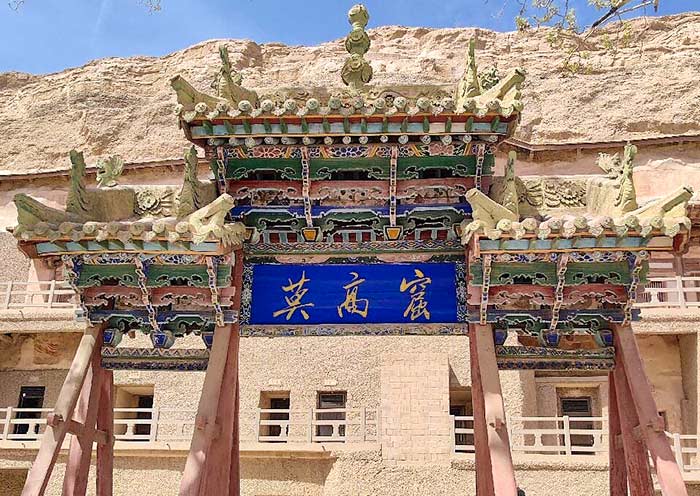
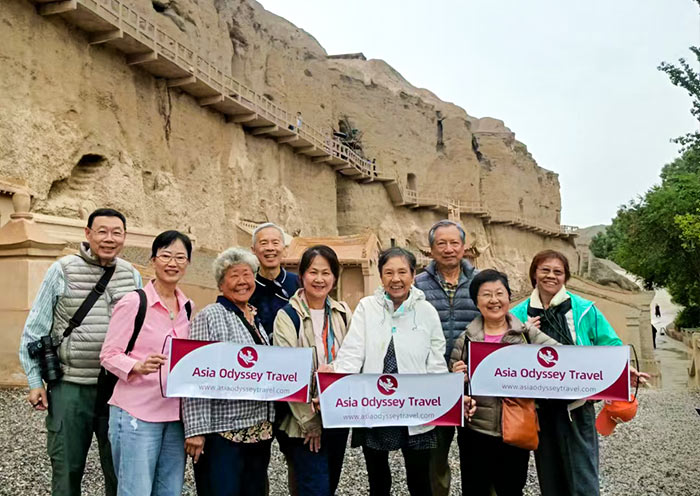


In the morning, you can pay a visit to Dunhuang Museum (Closed on Mondays). In the afternoon, travel from the Mogao Grottoes to Liuyuan South Station (140 km, 2.5 hours) to catch the high-speed train to Turpan (3.5 hours).
Dunhuang Museum (敦煌博物馆; Closed on Mondays; Reservation Required): It has distinctive architecture, blending cultural symbols such as the Great Wall, beacon towers, and ancient castle-style buildings in its exterior and color scheme. It houses over 13,355 cultural relics from the Neolithic period to the Ming and Qing Dynasties. The most treasured items include ink writings on hemp paper from the Western Han Dynasty (8 BC), a torch made of reeds from the Han Dynasty, and the Beiliang Stone Pagoda. Additionally, there is a 1:1 replica cave of Cave 45 (Tang Dynasty; 8th century) from the Mogao Caves, allowing you more time to admire and photograph the replicas up close.
After the tour, you will head to Liuyuan South Station for the bullet train to Turpan.
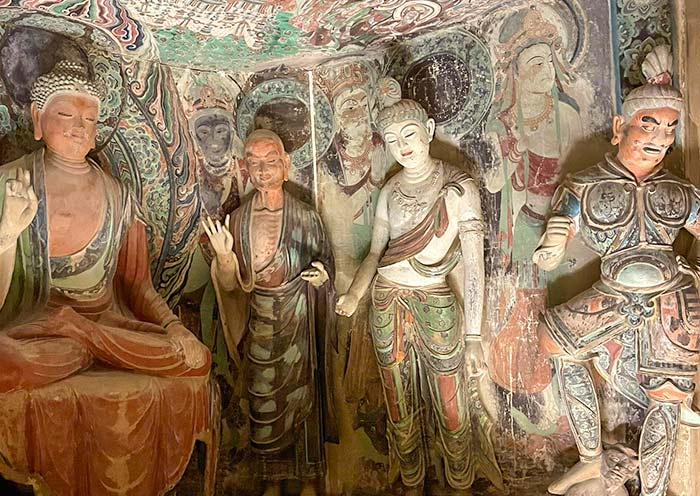

Today, you will delight in a splendid Turpan Culture Tour, exploring the Jiaohe Ancient City Ruins (a World Heritage site), the Karez System (one of China’s three Great Ancient Engineering Projects, alongside the Great Wall & the Grand Canal), and the Emin Minaret (Islamic and Uyghur Buildings) before traveling to Urumqi, a journey of about 210 km (4 hours).
After breakfast, begin your visit to Jiaohe Ancient City (交河故城), one of the best-preserved ruins of ancient cities along the Silk Road and inscribed on the UNESCO World Heritage List as part of the joint application "Silk Roads: the Routes Network of Chang'an-Tianshan Corridor." Jiaohe Ruins offers a profound glimpse into ancient city planning and the historical complexity of the civilizations on the Silk Road.
Nestled between two deep river valleys, Jiaohe, meaning "the confluence of two rivers," is strategically positioned on a large, steep plateau that provides formidable natural defenses. As a key city connecting the Central Plains (中原) and the vast regions of the Western Regions (西域), Jiaohe Ancient City played a vital role in the transportation network of the Silk Road. It witnessed the bustling trade along the Silk Road and the exchange and integration of Eastern and Western cultures.
Unlike many ancient cities, its structures were not built up from the ground but carved down into the existing plateau of loess soil. Walking through the ruins, you can see the remains of government offices, residential houses, Buddhist stupas, and temples. These remnants not only provide important physical evidence for studying the history and culture of the Silk Road but also offer valuable insights into the social, economic, and religious life that shaped this region. Tips: There is no shelter inside the ruin, so be mindful of sun protection.
The History of Jiaohe Ancient City
The Ancient City of Jiaohe witnessed the development of civilization in the Western Region and the Silk Road. Approximately 2,000 years ago, it was established as the capital of the Jushi Kingdom (车师国), one of the 36 kingdoms in the Western Regions (西域三十六国). Following Zhang Qian's pioneering efforts during the Western Han Dynasty to carve a path through the Western Regions, Jiaohe City emerged as a crucial hub on the Silk Road. In 60 BC, the Han Dynasty central government established the Protectorate of the Western Regions (西域都护府) to administer the various states in the region, officially incorporating the Western Regions into the Chinese domain. During the Northern and Southern Dynasties, Jiaohe became a county under the jurisdiction of Gaochang (高昌). The city reached its zenith during the Tang Dynasty with the establishment of the Anxi Protectorate (安西都护府), marking a new era in the governance of the Western Regions. During this period, Jiaohe was a bustling center of international trade and vibrant cultural exchanges among diverse ethnic groups. From the 19th to the 14th century, due to the impact of wars, Jiaohe gradually declined and eventually became a ruin.
Next, head to the Karez System (坎儿井) to learn about the ancient underground irrigation system a few thousand years ago and how this system has benefited the people along the desert's edge, transforming barren land into a lush oasis. This traditional engineering marvel is considered one of China’s three great ancient engineering projects, alongside the Great Wall and the Grand Canal. It has been recognized in the 2024 World Irrigation Project Heritage list (世界灌溉工程遗产名录).
The origin of the Karez Irrigation System
Turpan, in Xinjiang, is one of China's most arid regions, with annual rainfall of only 16 millimeters and evaporation exceeding 3,000 millimeters. These extreme conditions have led to severe surface water scarcity. To improve their survival prospects, people ingeniously utilized the natural slope of mountains to channel underground rainwater, glacial melt, and snow-melt from spring and summer to the surface for irrigation. This method greatly reduced water loss through surface evaporation, meeting the water needs of this arid region. It’s often said, "Without the Karez, there would be no Turpan; without the Karez, there would be no civilization in Turpan." The Karez has turned extremely arid basins into green havens, making Turpan a crucial corridor for East-West exchanges along the Silk Road and a place where diverse cultures converge and coexist.
The Karez system is often referred to as the "Underground Great Wall". In Xinjiang, there are over 1,700 Karez Wells which, if connected, would stretch over 5,000 kilometers, forming a vast underground river network. It is estimated that the Karez system has a history of over 2,000 years. Imagine centuries ago, without modern measuring tools or mechanical assistance, how ancient people located underground water sources, determined the gradient and direction in complete darkness, and connected such lengthy channels. Today, you have the opportunity to step into the Karez and personally unravel the secrets of this most mysterious hydraulic engineering project, experiencing first-hand how ancient innovation works.
Next, continue your exploration at the Emin Minaret (额敏塔), the tallest Islamic minaret in Xinjiang. Also known as Sugong Ta (苏公塔), this remarkable structure was erected in 1778 by the local ruler Suleiman, in tribute to his father, Emin Khoja, whose considerable efforts helped maintain national unity.
It stands 44 meters (144 feet) tall and is made from sun-dried bricks, which give it a distinct, earthy color. The tower's cylindrical body tapers elegantly as it rises, topped by an ornate, pointed dome. Uyghur artisans crafted up to 15 different types of brick patterns, including waves, diamonds, floral clusters, and crosses, which create endlessly looping designs around the tower. Gazing up from beneath the tower, you can fully appreciate the simplicity and grandeur of these designs. The accompanying mosque is an integral part of the complex, which you can visit as well. Emin Minaret serves not only as a religious structure but also as a cultural icon for the Uyghur people, embodying a unique blend of Islamic and Uyghur architectural traditions.
Then, head to Urumqi for Overnight. Welcome to Urumqi (乌鲁木齐), the capital of the Xinjiang Uygur Autonomous Region in China. It is notable for being the largest city in the world that is furthest from the ocean, with a distance of over 2,500 km from the nearest coastline. Urumqi is located in northwestern China, adjacent to Central Asian countries, and is often referred to as the "Urban Heart of Asia." Historically, Urumqi played a significant role as a major stop on the ancient Silk Road, facilitating trade between China and the West.
This history has left a lasting impact, making Urumqi a melting pot of ethnic groups, including Uyghurs, Han, Kazakhs, and others, which has shaped the unique cultural ambiance of western China. In addition to its rich history, the city is surrounded by the rugged beauty of the Tian Shan Mountains, providing stunning backdrops and opportunities for outdoor activities.
Note: Xinjiang follows the unified Beijing Time, which is UTC+08:00. However, due to its geographical location within the UTC+6 time zone, the actual local sunrise and sunset in Xinjiang occur about two hours later than they would according to Beijing Time.
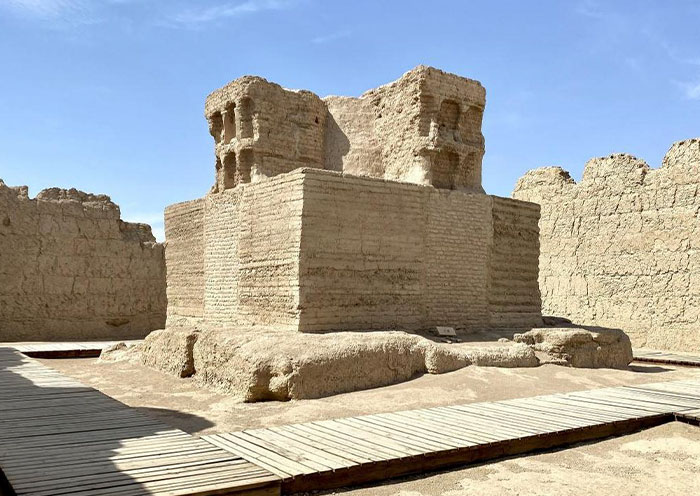
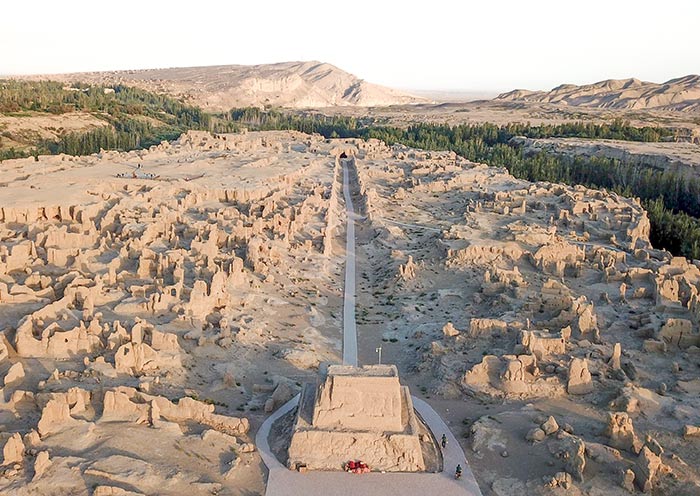
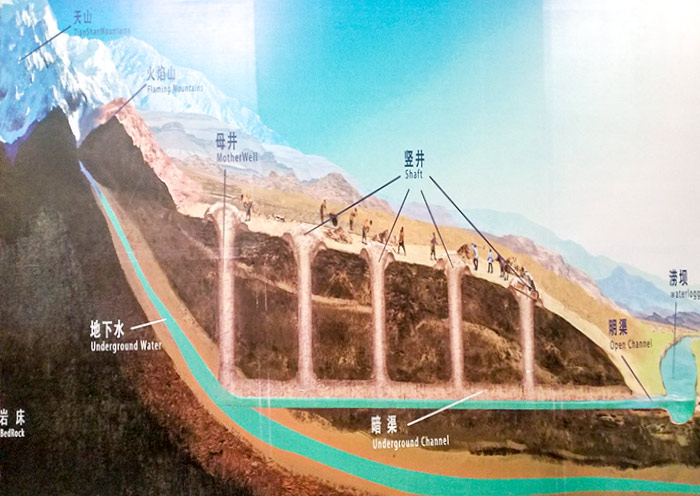
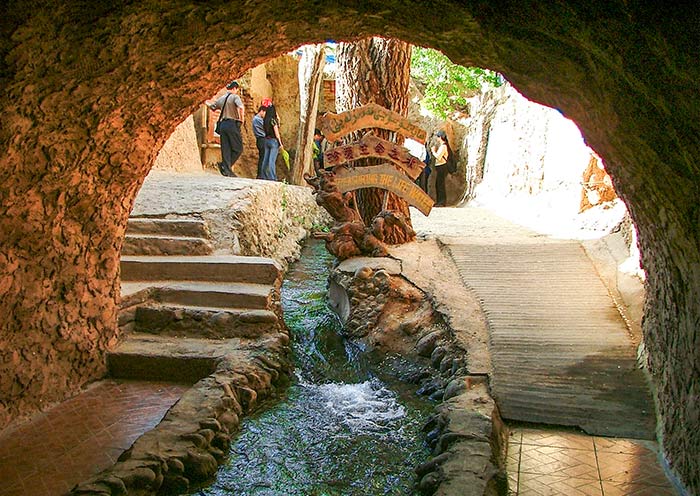
Today, you'll embark on a full-day tour around Urumqi to explore the breathtaking natural beauty of Tianshan Tianchi Lake (Heavenly Lake of Tianshan) and the enlightening exhibits at the Xinjiang Regional Museum.
In the morning, you'll be driven about 70 km (about 1-1.5 hours) to Heavenly Lake of Tianshan (天山天池), a UNESCO World Heritage Site. Nestled at an elevation of around 1,980 meters (6,500 feet) above sea level, this serene alpine lake is surrounded by lush forests, snow-capped peaks, and breathtaking landscapes. Renowned for its crystal-clear waters, panoramic Bogda mountain views, and connections to ancient myths and legends, Heavenly Lake is a must-see. One such legend involves the Queen Mother of the West (西王母), who is said to have hosted a banquet for the Eight Immortals here.
Upon arrival, you'll first take 40-minute sightseeing bus ride through the dramatic mountains. Then, enjoy 10-minute walk to the picturesque lake. Enjoy a leisurely stroll around Heavenly Lake, taking in the fresh mountain air and diverse flora and fauna.
Optional Activities (Additional Fee Required):
1. Boat Ride: Cruise across the peaceful waters of the lake, immersing yourself in its beauty and the reflections of the snow-capped mountains.
2. Cableway Ride: Take a cableway up to Mayashan for even more stunning views of Bogda Mountain.
After lunch, return to Urumqi and visit the Xinjiang Regional Museum (新疆维吾尔自治区博物馆). This renowned museum showcases the region's rich history, ethnic cultures, and the ancient Silk Road. Explore extensive collections that include exotic artifacts from the Silk Road, and fascinating displays of traditional ethnic costumes and household items from various cultures such as Uyghur, Kazakh, and Han. The most unique is the exhibit of ancient mummies, which houses some of the world’s best-preserved mummies, including the famous “Loulan Beauty楼兰美女”, one of the 3,800-year-old desert-mummified bodies of Indo-European ancestry. Remember to take a look at the 'Five Stars Rise in the East, Benefit China' Han Dynasty Brocade Armband (”五星出东方利中国”汉代锦护臂), which is one of the first batches of cultural relics in China that were prohibited from being exhibited abroad. It is acclaimed as one of the greatest archaeological discoveries of 20th-century China. Also, the "Fu Xi and Nu Wa Silk Painting (伏羲女娲图)" illustrates the image of human ancestors from ancient Chinese myths and legends, dating back to the Tang Dynasty. The museum’s immersive exhibits will transport you back in time, allowing you to learn about the fascinating history of the Silk Road and the cultural interactions that have shaped Xinjiang.
Note: When the Xinjiang Regional Museum is closed on Monday, we will visit the Urumqi Grand Bazaar (新疆国际大巴扎) instead.
After the tour, return to your hotel in Urumqi.
Free Time Ideas:
The Urumqi Grand Bazaar, also known as the Xinjiang International Grand Bazaar, is a vibrant marketplace and a perfect way to spend your free time. Explore the many shops and stalls offering various local products, including traditional Uyghur clothing, carpets, handmade crafts, silk scarves, jewelry, spices, and dried fruits. Be sure to try local favorites such as lamb kebabs, polu (pilaf), naan bread, and laghman (hand-pulled noodles). Additionally, the architecture of the Grand Bazaar itself is worth admiring with its grand minarets, domes, and intricate Islamic-inspired designs.

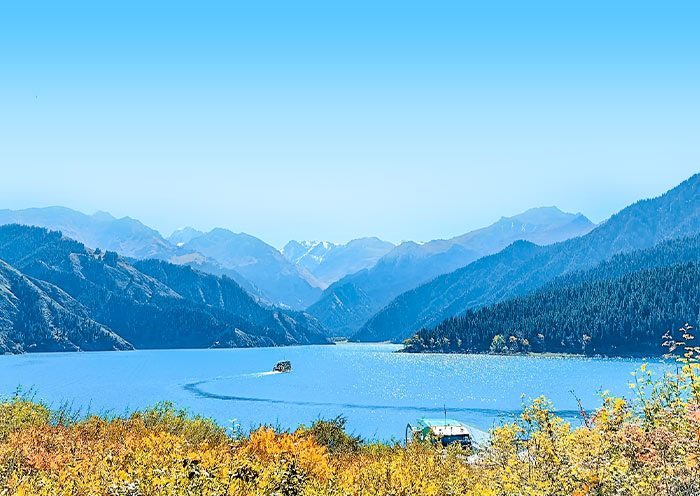
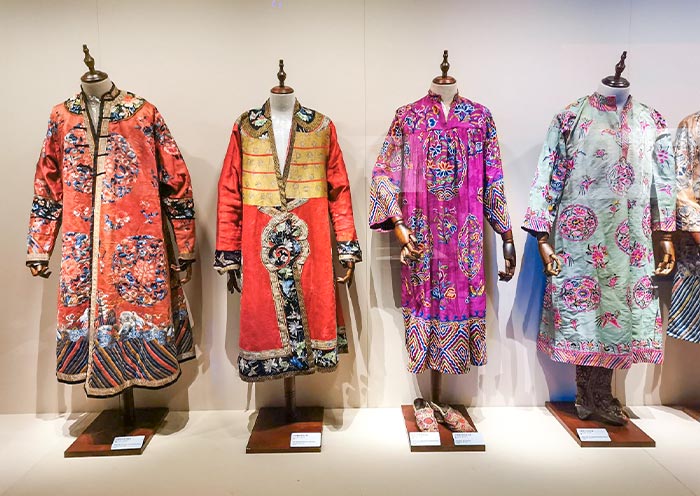
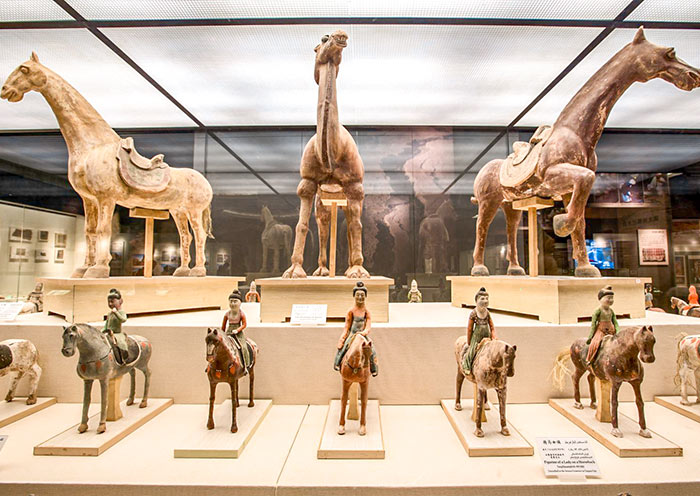
This early morning, you will take a flight to Kashgar (about 2 hrs). Upon arrival at Kashgar Airport, your local tour guide will greet you and escort you to downtown Kashgar.
Kashgar (喀什), located in the southwestern part of Xinjiang, was historically known as Shule ( (疏勒国), and was one of the thirty-six kingdoms of the Western Regions (西域三十六国). For centuries, Kashgar has been a significant city in southern Xinjiang. It served as the western terminus for the northern, central, and southern routes of the ancient Silk Road, connecting Asia and Europe. It has long been a transportation hub and distribution center for goods between East and West. Trade is highly developed here, earning it the title of "Kingdom of Bazaars (markets)." Diverse cultures from Asia and Europe converge on Kashgar, clashing and blending intensely with the local culture, injecting new vitality into Kashgar. This cultural fusion is specifically reflected in Kashgar's architecture, cuisine, and vibrant markets.The city has been a melting pot of various ethnicities, including Uyghurs, Han, Tajiks, and others. Kashgar's geographical location is near the Taklamakan Desert and surrounded by the Kunlun Mountains and the Pamir Plateau provides spectacular natural scenery.
Your exploration can begin in Kashgar Old City (喀什老城市). The Old City is the soul of Kashgar, encapsulating over two millennia of cultural and commercial exchanges along the Silk Road. Situated at the heart of the city and spread across 3.6 square kilometers, the Old City is a living museum, telling tales of ancient trade and cultural fusion. As a crucial hub for East-West traffic and a distribution center for goods, it offers a vivid glimpse into past prosperity.
Within Kashgar Old City, the streets and alleys intersect intricately, narrow and winding paths with buildings of varying heights, creating a layout that resembles a maze. As you wander through, you'll see traditional Uyghur mud-brick houses and numerous structures with Islamic features, such as pointed arches, domes, intricate woodcarvings, and colorful ceramic tiles. These architectural and street designs perfectly Central Asian and Islamic architectural elements with Uyghur characteristics, creating a sense of time travel for visitors.
The Kashgar Old City thrives with commercial activity, with numerous bazaars and street markets scattered throughout, such as the Pottery Bazaar, Flower Pot (Doppa) Bazaar, Blacksmith Bazaar, Woodwork Bazaar, Medicine Tea Bazaar, Han Bazaar (Food Street)... This area is not only an excellent place to purchase and appreciate various handicrafts but also an ideal spot to savor Uyghur cuisine. Indulge in succulent lamb kebabs (羊肉串), rich and spicy lagman noodles (拉条子), savory samsas (烤包子), and freshly baked Naan (囊). As you wander through, the scenes, sounds, and scents on the streets seem to transport you back to the heyday of the Silk Road. You can almost visualize the bustling caravans, with merchants from China, Persia, Arabia, and many local regions converging here. The air is filled with the melodious ringing of bells on camels' necks.
Furthermore, Kashgar Old City is a hub for numerous cultural and religious activities as well as a place for residents' daily lives and social interactions. One of the most notable landmarks is Id Kah Mosque(艾提尕尔清真寺), one of the largest mosques in China, attracting thousands of worshippers daily. To experience local life firsthand, you can visit a century-old teahouse (百年老茶馆). As you sit, sip tea, and observe, you'll appreciate the traditions and hospitality of Uyghur people. With luck, you might have to a chance to witness locals playing and singing traditional Rawap music.They may even invite you to join in, twirling your hands as you dance.
If you happen to visit Kashgar on a Sunday, you can't miss the famous Kashgar Livestock Market (牛羊巴扎).
On the northern edge of Kashgar city, there is a massive livestock trading market. Every Sunday, this market becomes as lively as a carnival. People from surrounding villages flock here with their sheep, cows, and even camels.
At the market, you can witness Uyghur herders proudly showcasing their livestock. The traders typically grasp each other’s hands inside the spacious sleeves of their robes, silently signaling their price offers with their fingers - an intriguing and silent process full of wit. Once the price is agreed upon, neither party can back out. This traditional method of trade has been continuing for thousands of years. It’s an excellent opportunity for photography and to witness the ancient commercial traditions that are fast becoming rare in the modern world.
Tips: Due to the large number of livestock in the market, prepare yourself for a strong odor.
After the tour, be escorted to your hotel in Kashgar.
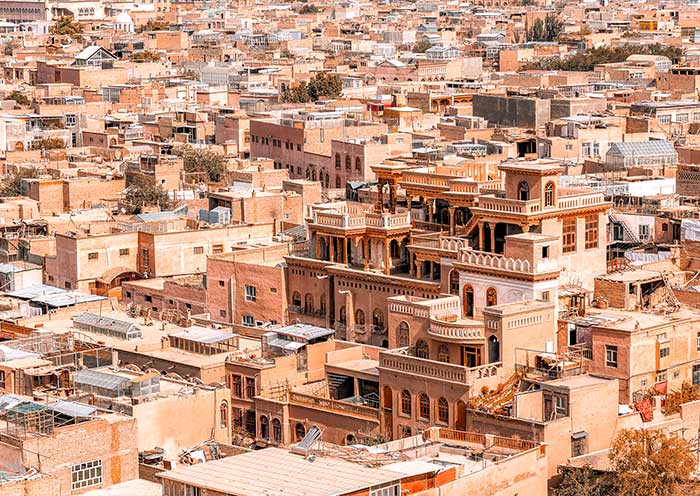
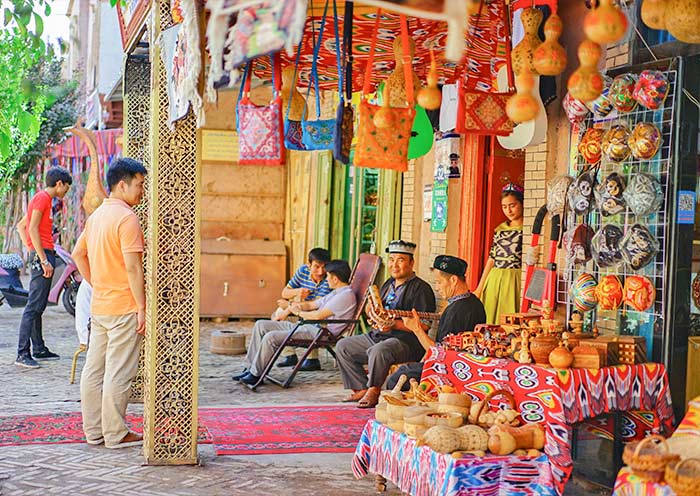
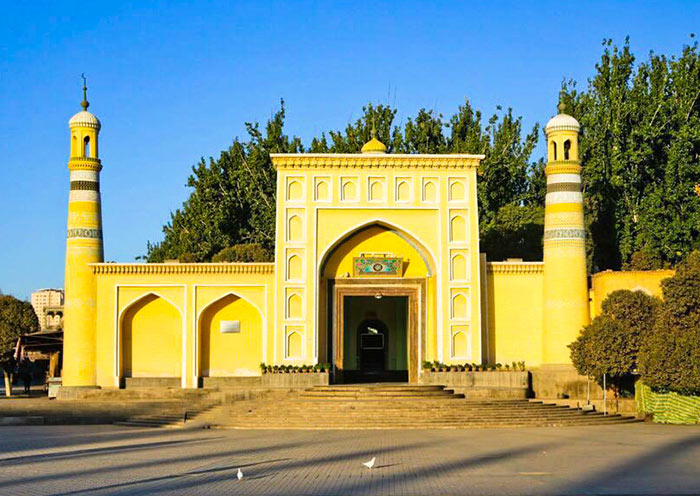

This morning, your guide and driver will pick you up from your hotel in Kashgar to embark on an exhilarating road trip along the China-Pakistan Highway. Along the way, you can enjoy the beautiful landscape of Pamirs Plateau, visit Baisha Lake and Karakul Lake, admire the distant and mysterious Muztagh Ata Peak, Kongur Tagh, Kongur Tiube. Finally, you will drive back to Kashgar. (Total distance: 400 kilometers, approximately 8 hours of travel).
The China-Pakistan Highway (中巴公路), also known as theKarakoram Highway (KKH), is one of the world's highest paved international roads. It connects China and Pakistan across the Pamir Plateau (帕米尔高原) and is locally referred to as the Pamir Highway. Historically, routes across the Pamir Plateau - known as Congling (葱岭) in ancient times - were vital parts of the Silk Road. This section posed one of the most daunting challenges for merchants and travelers due to its harsh, rugged terrain. Here, several of the world's renowned mountain ranges - the Himalayas, the Karakoram, the Kunlun Mountains, the Tianshan Mountains, and the Hindu Kush - converge and radiate outward, forming a massive mountainous junction. Today, the China-Pakistan Highway has transformed these perilous trade routes of the past into magnificent thoroughfares, attracting numerous tourists to the Pamir Plateau to experience its stunning natural scenery.
Along the way, you will visit the following attractions:
Baisha Mountain-Baisha Lake Scenic Area (白沙山-白沙湖景区):
As you drive along National Highway G314, you'll encounter Baisha Lake (白沙湖), also known as Bulunkou Lake - a striking plateau lake nestled in the Pamir Plateau (elevation:about 3,660 meters). From its shore, you're treated to a stunning vista: half pristine blue water, and half white sand mountain, both harmonizing with distant snow-capped peaks to create a magnificent spectacle.
On the lake's northern shore stands the renowned Baisha Mountain (白沙山), winding for over 1,200 meters. The dark mountain body, covered with white sand, presents a soft silvery-white color under the clean sunlight of the Pamir Plateau, resembling white silk. Legend has it that as the lake water gradually dries up in autumn and winter, the white sand at the bottom of the lake emerges. In spring, the wind blows this sand onto the mountain, creating the extraordinary spectacle of sand accumulating into a mountain. Whenever strong winds blow, Baisha Mountain emits a sound, earning it the name "Singing Sand Mountain." The southern shore of the lake is embraced by a chain of snow-capped mountains, with the highest peak being Mount Kongur Tagh at an elevation of 7,530 meters, adding further grandeur and mystery to this captivating landscape.
Karakul Lake (喀拉库勒湖):
Karakul Lake is a high-altitude moraine lake (elevation:about 3,600 meters).Its name in the Kyrgyz language means "Black Lake," attributed to its deep, dark waters. However, if you spend enough time by the lake, you will notice that it changes colors under different lighting conditions, appearing deep blue, emerald green, or ink black, earning it the nickname "the ever-changing lake."
Yet, the true highlights of Karakul Lake are the imposing peaks known as the "Kunlun Trio" that tower behind it: Kongur Tagh, Kongur Tiube, and Muztagh Ata, with altitudes of 7,719 meters, 7,595 meters, and 7,546 meters, respectively. On clear days, their majestic reflections are perfectly cast upon the glistening surface of the lake, creating the most iconic views of Karakul Lake. Among these, Muztagh Ata is particularly striking, covered with many glaciers, and is known as the "Father of Ice Mountains."
After tour, you will you will drive back to Kashgar along the scenic China-Pakistan Highway. You'll have another opportunity to admire the spectacular snow-capped peaks from various angles on both sides.
Stay overnight in Kashgar city.

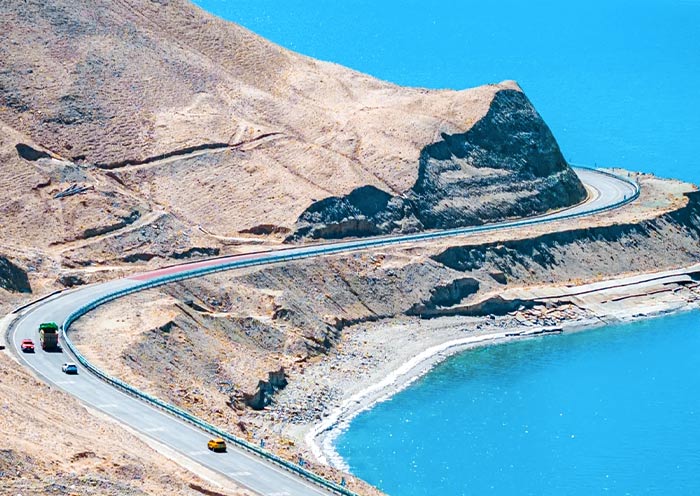
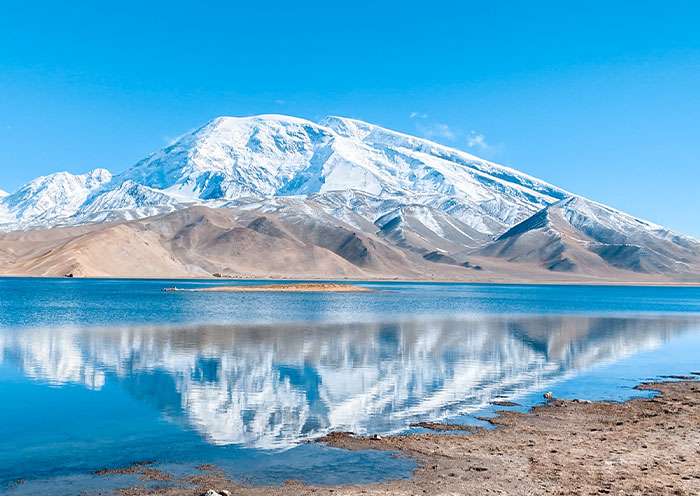

After breakfast, it is time to end your 8 Days China Silk Road Tour. You will have some free time in Kashgar and explore more at your own pace till your guide escorts you to the airport for your flight to your next destination.
Thank you for choosing Asia Odyssey Travel for your China Tour, we are always here working for you and hope to see you again for your next trip to China/Asia. Safe journey!
Departure Ideas:
1. Kashgar Airport: Kashgar International Airport, is one of the westernmost airports in China. The airport hosts a number of airlines that operate regular flights to major cities across China such as Urumqi, Beijing, Shanghai, Xian, Chengdu, and Guangzhou. It also handles international flights, including routes to cities in Central Asia.
2. Road Border Crossings: The Torugart Pass and Irkeshtam Pass are important channels between China and Kyrgyzstan. The Karasu Port is a crucial gateway between China and Tajikistan. The Khunjerab Pass is the only land border crossing between China and Pakistan. If you're considering departing via a road border crossing and require transportation, please contact your travel advisor for specific cost and arrangement details.
3. Extension Ideas: If you wish to extend your trip, you can explore other highlighted parts of Xinjiang such as Tashkurgan, Kuqa, Hotan, Kanas, Hemu, Yining, and, Taklimakan Desert, more, we can help you with the arrangements.
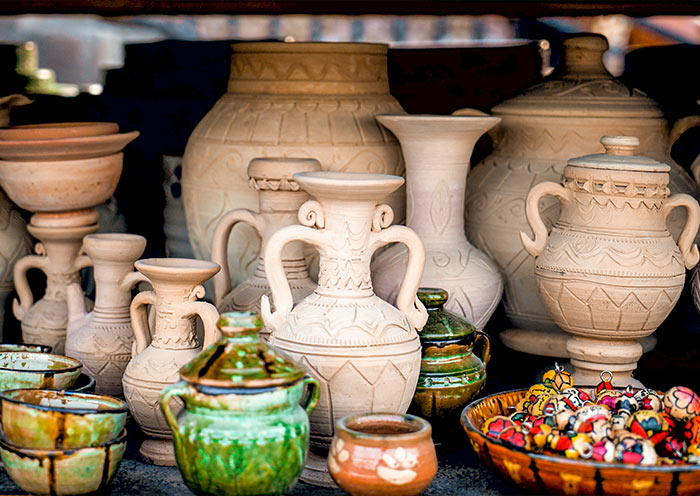
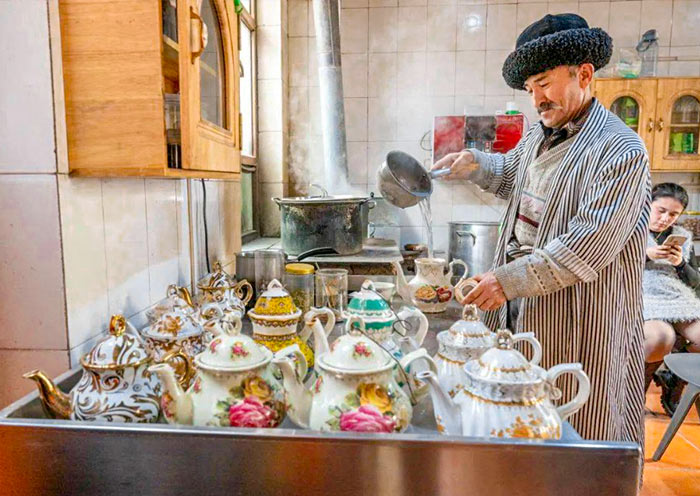
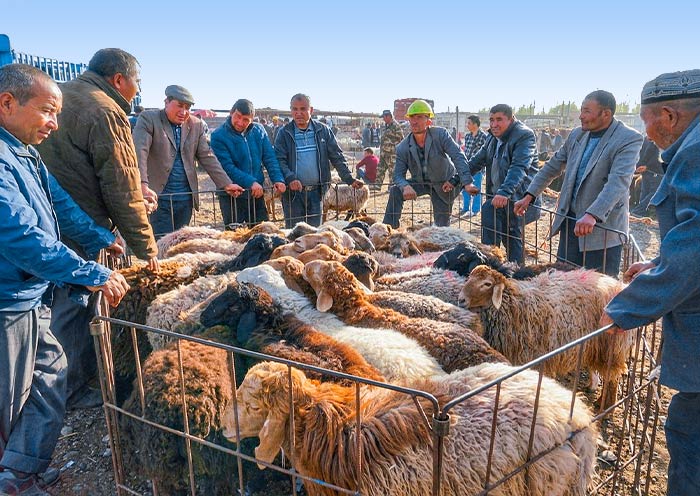
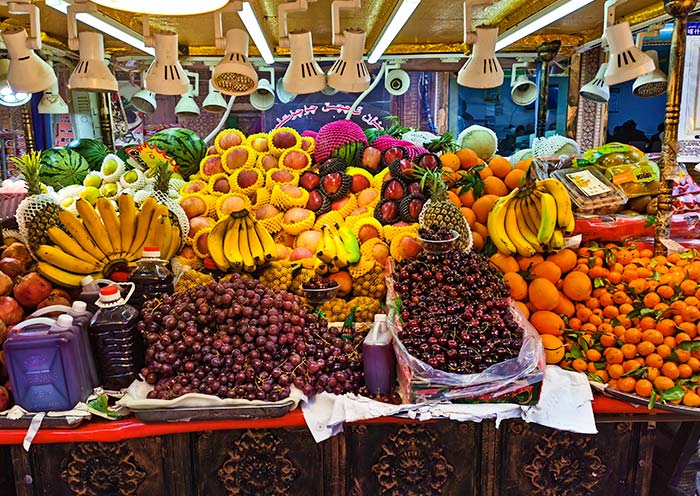
Price: What’s Included & What’s Excluded
What's Included:
What's Excluded:
Hotel Conditions for Silk Road Tours


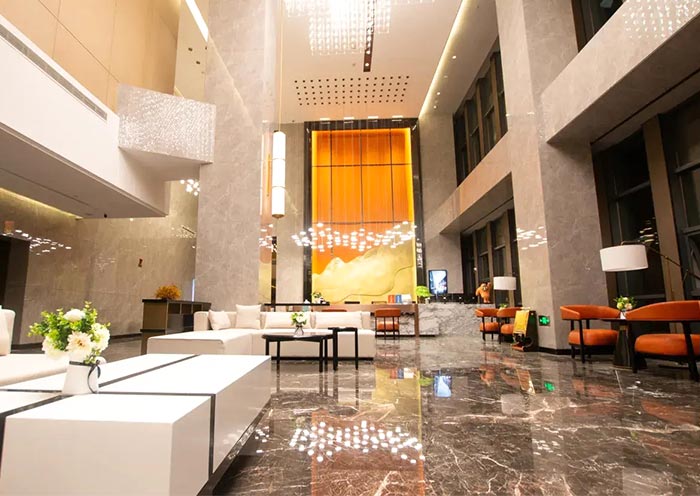
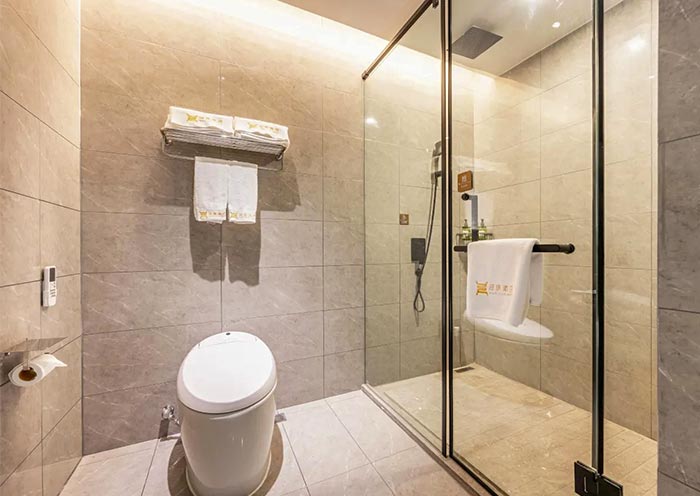
3 to 5 Star Hotels on the Silk Road Route Destinations:
Enjoy comfortable 3-star, 4 star or 5 star hotels along the Silk Road route, offering essential amenities for a relaxing stay after each day's adventures. These hotels provide a welcoming atmosphere with friendly service, perfect for Silk Road travelers.
Recommended Length to Stay (Xinjiang, Gansu & Qinghai)
To fully experience the Silk Road's highlights, we recommend a silk Road tour of 5-12 days. (1) One-Destination Deep Dive: Immerse yourself in the wonders of either Xinjiang (3-5 Days) or Gansu (5 Days). (2) Classic Silk Road Experience: Combine Xinjiang and Gansu together for a comprehensive exploration.(3) Ultimate Silk Road Journey: Extend your trip to include Qinghai and experience China’s diverse landscapes.
Standard Twin Room
Standard twin rooms on Silk Road group tours feature two comfortable beds, private bathrooms, and basic amenities. These rooms are designed for travelers seeking a cozy, convenient space to rest and recharge during their Silk Road journey.
Photo Gallery for This Itinerary
Latest Silk Road Tours Reviews from Our Customers

Sam Lin
Singapore
Date of Experience: Dec 24, 2024
Tour Customized by: Vincent
You May be Interested in This Tour: 8 Days Best Japan Group Tour: Japan Highlights & Hiroshima

Zhang Xin Hua
Malaysia
Visiting Japan’s Golden Route in October was incredible! From Tokyo's vibrant city life to the serene beauty of Mount Fuji, every stop was unforgettable. Kyoto’s temples and Nara’s friendly deer captured Japan’s charm, while Osaka’s food scene was a delight. The mix of tradition and modernity made it a perfect 7-day journey!
Date of Experience: Oct 26, 2024
Tour Customized by: Allan
You May be Interested in This Tour: 7 Days Japan Golden Route Tour in Small Group

Dan Z
Washington DC
Date of Experience: Aug 24, 2024
Tour Customized by: Rex
You May be Interested in This Tour: 7 Days Japan Kansai Tour with Hiroshima: Osaka, Kyoto, Uji & Nara
Price: Request
(Based on a private tour for two people. Price varies depending on program, travel date, number of people.)
Free Enquiry! You don’t need to pay for the reservation.
- United States (+1)
- Australia (+61)
- Singapore (+65)
- Malaysia (+60)
- Philippines (+63)
- Canada (+1)
- Italy (+39)
- Indonesia (+62)
- United Kingdom (+44)
- Spain (+34)
- Mexico (+52)
- Hong Kong (+852)
- Thailand (+66)
- United Arab Emirates (+971)
- New Zealand (+64)
- South Africa (+27)
- Germany (+49)
- Brazil (+55)
- India (+91)
- France (+33)
- Vietnam (+84)
- The Netherlands (+31)
- Saudi Arabia (+966)
- Ireland (+353)
- Argentina (+54)
- Switzerland (+41)
- Romania (+40)
- Pakistan (+92)
- Japan (+81)
- Portugal (+351)
- Bangladesh (+880)
- South Korea (+82)
- Puerto Rico (+1)
- Türkiye (+90)
- China (+86)
- Belgium (+32)
- Qatar (+974)
- Greece (+30)
- Taiwan (+886)
- Austria (+43)
- Poland (+48)
- Israel (+972)
- Chile (+56)
- Sri Lanka (+94)
- Nigeria (+234)
- Peru (+51)
- Colombia (+57)
- Hungary (+36)
- Nepal (+977)
- Denmark (+45)
- Bulgaria (+359)
- Norway (+47)
- Slovenia (+383)
- Sweden (+46)
- Kuwait (+965)
- Costa Rica (+506)
- Ecuador (+593)
- Venezuela (+58)
- Malta (+356)
- Croatia (+385)
- Tunisia (+216)
- Czechia (+420)
- Mongolia (+976)
- Bahrain (+973)
- Mauritius (+230)
- Papua New Guinea (+675)
- Cambodia (+855)
- Dominican Republic (+1)
- Luxembourg (+352)
- Finland (+358)
- Guatemala (+502)
- Myanmar (+95)
- Maldives (+960)
- Slovakia (+421)
- Laos (+856)
- Serbia (+381)
- Brunei (+673)
- Oman (+968)
- Macao (+853)
- Panama (+507)
- Morocco (+212)
- Jordan (+962)
- Georgia (+995)
- Fiji (+679)
- Bolivia (+591)
- Lithuania (+370)
- Bahamas (+1)
- Cyprus (+357)
- Latvia (+371)
- Bhutan (+975)
- Iraq (+964)
- Iran (+98)
- Kenya (+254)
- Jamaica (+1)
- Zimbabwe (+263)
- Azerbaijan (+994)
- Uruguay (+598)
- Estonia (+372)
- Andorra (+376)
- Cameroon (+237)
- Ghana (+233)
- Kazakhstan (+7)
- Nicaragua (+505)
- Egypt (+20)
- Russia (+7)
- Albania (+355)
- Réunion (+262)
- Montenegro (+382)
- Algeria (+213)
- Afghanistan (+93)
- Martinique (+596)
- Uganda (+256)
- Honduras (+504)
- North Macedonia (+389)
- Trinidad and Tobago (+1)
- Suriname (+597)
- Antigua and Barbuda (+1)
- Zambia (+260)
- Ukraine (+380)
- Armenia (+374)
- Barbados (+1)
- Belarus (+375)
- Palestine (+970)
- Lesotho (+266)
- Moldova (+373)
- Ethiopia (+251)
- French Polynesia (+689)
- Gambia (+220)
- Guam (+1)
- Gibraltar (+350)
- Isle of Man (+44)
- New Caledonia (+687)
- El Salvador (+503)
- Comoros (+269)
- Seychelles (+248)
- Chad (+235)
- Samoa (+685)
- Cook Islands (+682)
- Palau (+680)
- Paraguay (+595)
- DR Congo (+243)
- Solomon Islands (+677)
